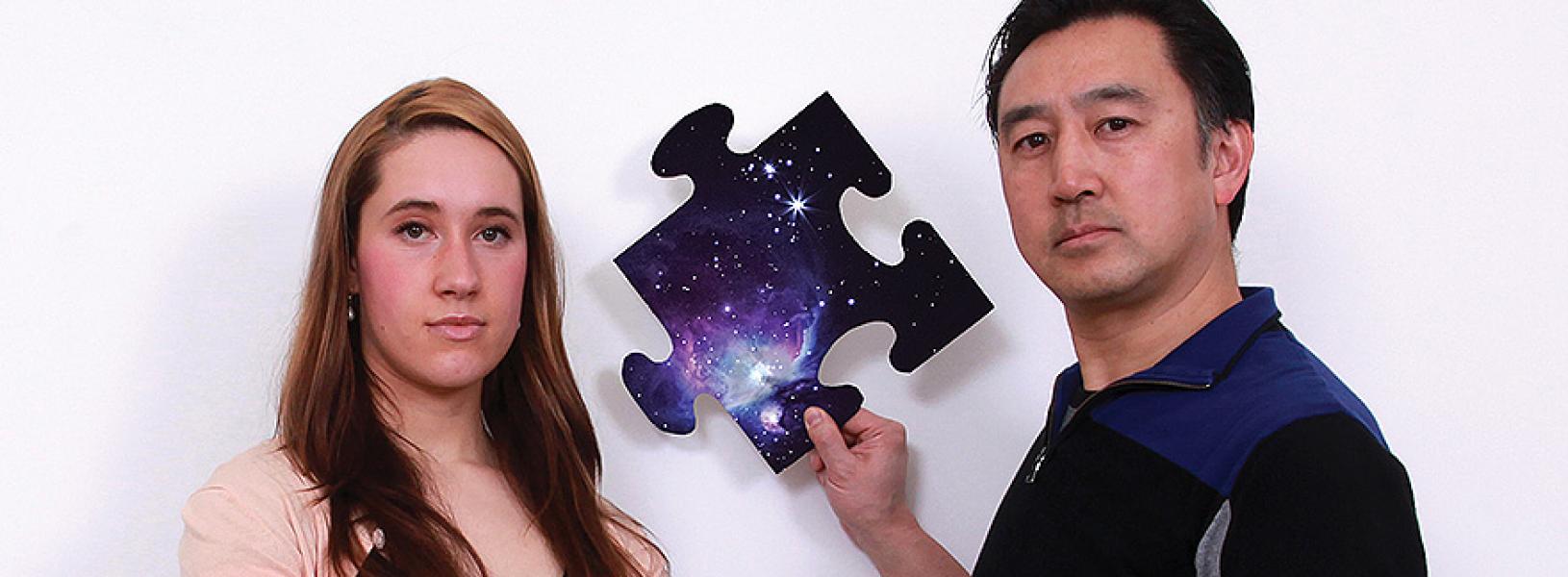With the world’s attention on Queen’s physicist Dr. Art McDonald after he received the Nobel Prize in Physics for breakthrough neutrino research, we decided to shine a spotlight on other innovative Queen’s physicists.
Jennifer Mauel, now a fourth-year undergraduate student, started her Queen’s degree in Global Development Studies, but early on, she felt a stronger pull to mathematical sciences. She ended up taking a first-year physics course with Professor James Fraser. His teaching impressed her so much that she committed to the field, and has since spent two summers working on the SNO+ experiment at the Sudbury Neutrino Observatory with Professor Mark Chen.
Ms. Mauel and Dr. Chen, through SNO+, are asking the next questions about the nature of neutrinos, trying to understand their mass and why it’s so small.
“The work is really challenging and fun – we’re doing puzzles all the time,” she says. “These deep, fundamental questions about existence – where we come from, the matter/anti-matter question – there’s nothing more exciting.”
Mark Chen and Jennifer Mauel
Mark Chen, Professor, Gray Chair in Particle Astrophysics
Jennifer Mauel, fourth-year BSc student
Queen's Department of Physics, Engineering Physics & Astronomy
Mark Chen: We’ve developed a liquid scintillator – this gives off more light when a neutrino interacts in it than it would in water or heavy water.
With the new liquid inside the detector at SNOLAB, we can study neutrinos from different sources with lower energy – this gives us the opportunity to continue to explore the new properties of neutrinos discovered by SNO.
One of the key questions is, now that we know neutrinos have mass, we want to understand that mass and why it’s so small.
After we put the new liquid in the detector and study neutrinos from the sun, the Earth and from nearby nuclear reactors, we’re also going to do a separate thing – dissolve the element tellurium into the liquid. This element can undergo a very rare nuclear decay – if we can detect this, it tells us something very important about neutrinos, that the neutrino is its own anti-particle.
Each fundamental particle in nature has its anti-matter counterpart. It’s uniquely possible for neutrinos to be their own anti-particle. If we can uncover this property, it tells us many things. It points to the absolute scale of neutrino mass, how heavy neutrinos are. And it tells us that there is a different mass generation mechanism involved for neutrinos; and it could explain the matter/anti-matter asymmetry that is observed in our universe.
Jennifer Mauel: I was looking at the optical properties of one of the components in this liquid scintillator cocktail. In order to load tellurium, we need to add a secondary wavelength shifter – the purpose is to detect as much light as possible, to get the optimal light output from the scintillator. I was looking at the fluorescent properties of the chemical compound perylene to determine how it absorbs and emits light. This will help to improve the sensitivity of the experiment to rare events like neutrino-less double beta decay.
Earlier, during my first summer at SNOLAB, I was working on a pressure equalization system for the detector. We can’t have any breaks or cracks in the fragile detector, so we need to maintain constant pressure in the acrylic vessel where the liquid scintillator is located – we need to completely isolate that system. In order to do that, we constructed this cover gas system – basically a system of connected bags filled with nitrogen gas that expand and contract when the pressure fluctuates in the mine, keeping the pressure constant in the acrylic vessel.


